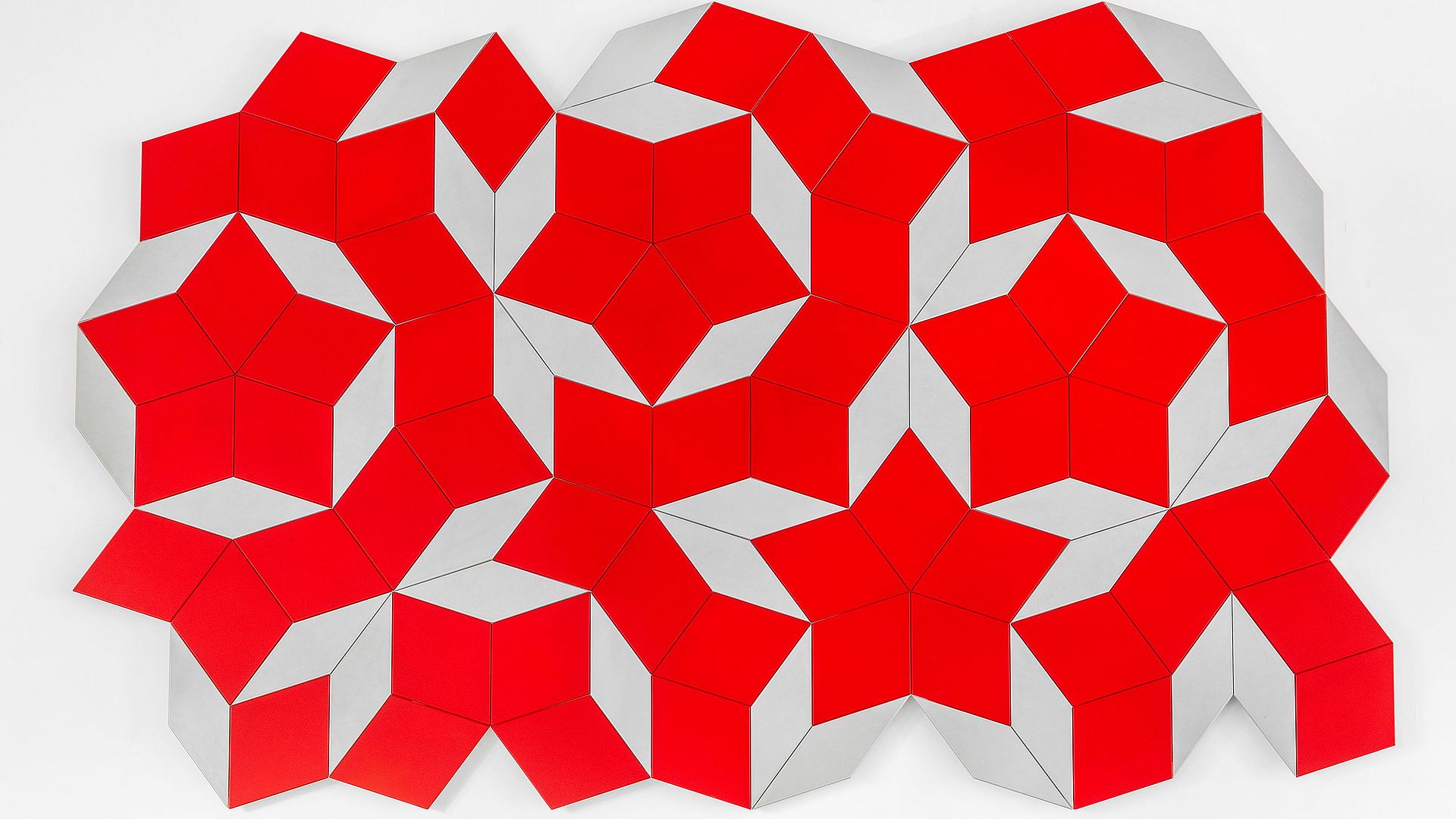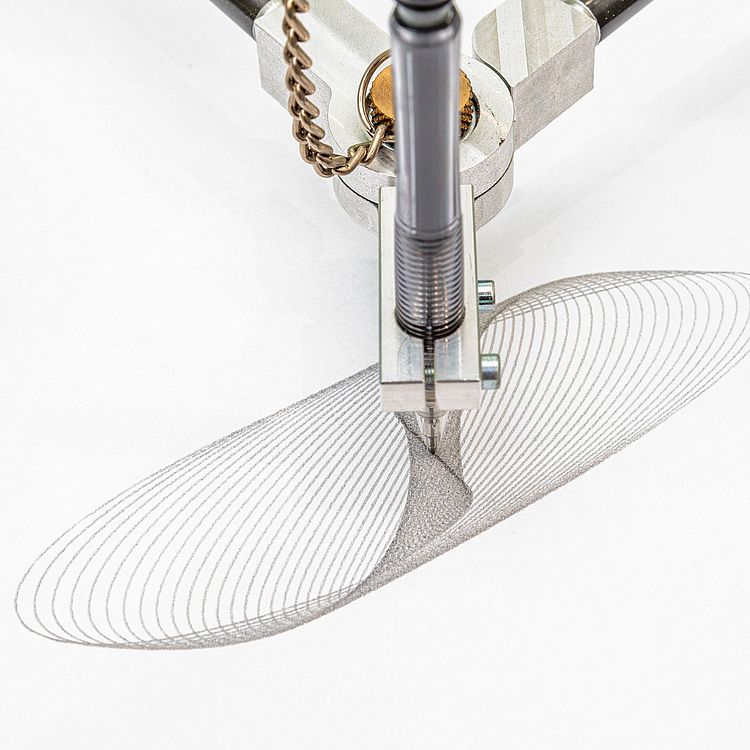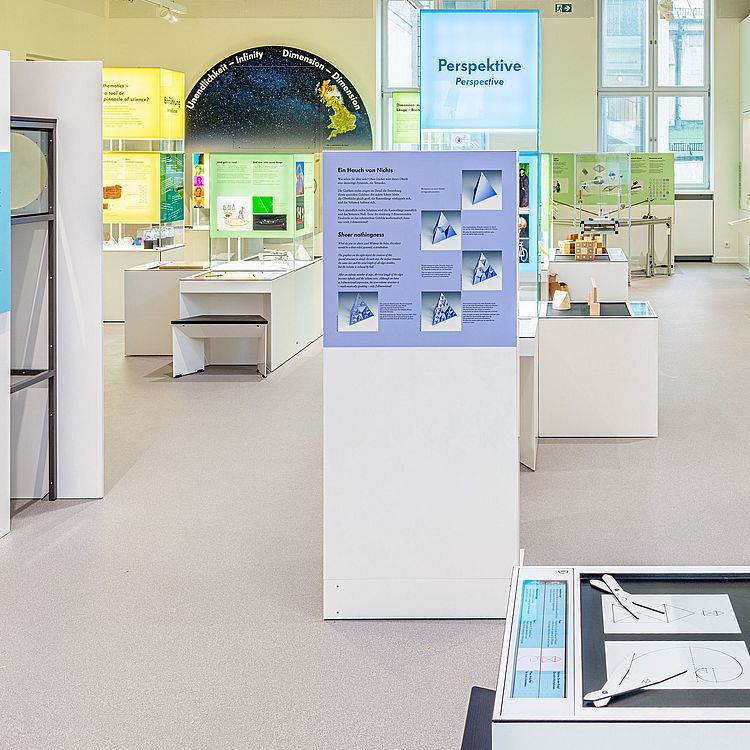
Photo: Deutsches Museum | Reinhard Krause und Hubert Czech
Communication Information Media
Mathematics – Fun to the power of three!
Games + exhibits + applications: across the Perspective, Dimension and Symmetry areas of the exhibition, this formula demonstrates the extent to which mathematics is a part of our everyday lives.
Mathematics exhibition – overview
Games + exhibits + applications = fun to the power of three! The Mathematics exhibition is based on this formula. The central elements here are cubes, which appear throughout the exhibition in the Introduction, Dimension, Perspective and Symmetry thematic areas. “Hanging” cubes contain key information and polyhedral interactive media stations, while cube-shaped experiment tables are spread throughout the exhibition. In this way, the interactive concept is placed in a geometric frame of reference, which is complemented by historical exhibits and insights into the practical applications of mathematics. A wide variety of games helps visitors to understand mathematical ways of thinking in a playful way, and richly illustrated exhibition texts reveal how such thinking is put into practice, for example in architecture. Particularly striking exhibits include a wooden pantograph from 1782, a gilded multipurpose divider from 1586, silver and ivory drawing instruments and an ellipsograph from South Korea that closely resembles the museum owl.
When will this event take place?
Discover which activities are taking place by checking our daily programme, which is published at around 9.20 each day. Our programme changes daily and includes guided tours, demonstrations, science shows and hands-on activities for individual visitors and small groups of up to five people. All programme events are held in German. They begin either directly where the activity is set to take place or at a guided-tour meeting point in the relevant exhibition.
View Inside the Mathematics Exhibition
You have specialist questions for our curator?
Do you have organizational questions?
Cornelia Schubert
Assistance to department heads, main department heads and curators
Susanne Schmölz
Assistance to department heads, main department heads and curators














